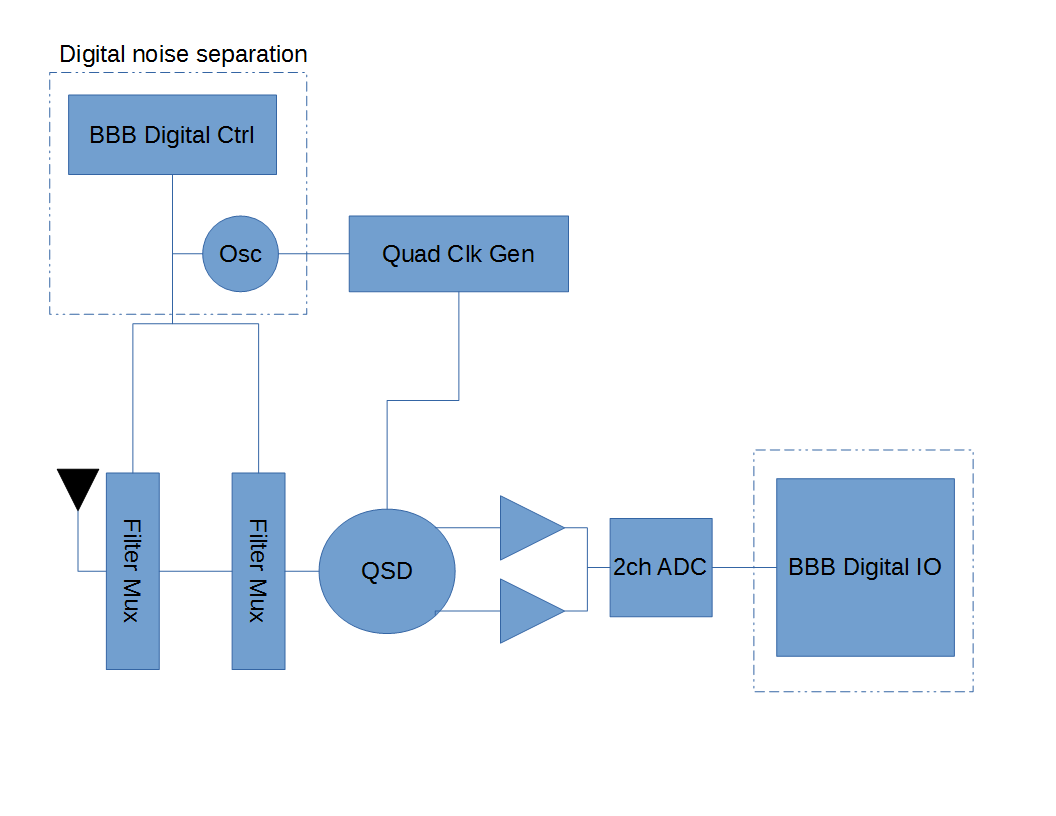Details are super light because I haven't got very far in the design process yet.
Essentially I want to do this design the 'open source' way; I'll take a proven design (SoftRock), build on it from various community sources (KD2BOA, M0RZF), and add a bit of my own stuff in there (BBB).
This is my first analog RF design, and although I'm an electrical engineer by trade I would like to not have 10 revisions before I get something working. So in that vein a proven design is very important to me. At the same time I think there is a massive hole in current portable HF SDR offerings. Using the BBB one can really leverage the processing power and linux software world to build what I think will be an awesome little HF receiver.
The idea then would be to get HF Rx working and move onto Rx/Tx. That's the future plans anyway.
Project Intro Video is up!
 eresonance
eresonance

On the DAC/ADC, the PCM3060 is quite inexpensive at £4.50 ($6) or there about. Its Serial clocked and can run up to 96Khz sample rates. The PeaberrySDR uses this connected to a Cypress USB Audio adapter (The Peaberry performs quite well)